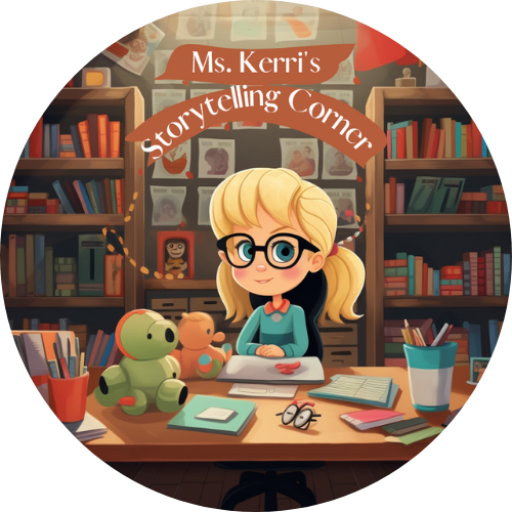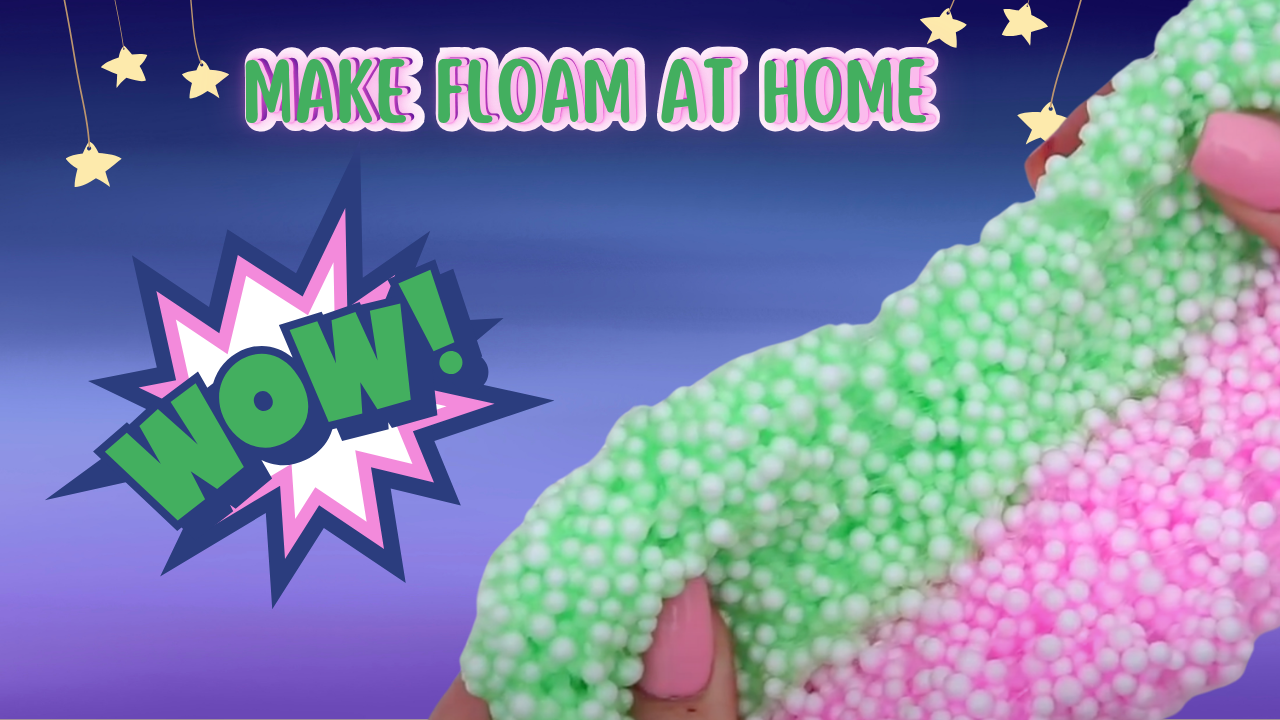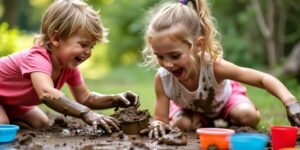What is Floam and Why is it Great for Young Learners?
When parents ask me about activities that keep kids engaged while learning, floam always tops my list. This remarkable sensory material combines the stretchy properties of slime with tiny foam beads, creating something that feels both squishy and delightfully crunchy. Children can’t resist squishing it between their fingers, stretching it into wild shapes, or simply enjoying the satisfying pop of those little beads.
Floam goes beyond simple entertainment. This tactile material becomes a gateway for scientific discovery, encouraging children to experiment with different textures while building essential fine motor skills. When kids manipulate floam, they’re actually exploring basic principles of material science without even realizing it. The open-ended nature of this sensory play allows young minds to investigate cause and effect through hands-on discovery.
What makes floam particularly valuable for early childhood education is its ability to transform ordinary playtime into meaningful STEM exploration. Children naturally ask questions about why it stretches, how it holds its shape, or what happens when they add more beads. These moments of curiosity become perfect opportunities for science exploration that feels more like play than formal learning.
The messy learning aspect shouldn’t scare parents away either. Yes, floam can get a bit messy, but that’s where some of the best learning happens. Children develop problem-solving skills, learn about cleanup responsibility, and gain confidence in their ability to create something amazing with their own hands.
Floam vs. Slime: Understanding the Key Differences

Parents often wonder how floam differs from regular slime, and the distinction matters for educational purposes. Traditional slime creates a smooth, gooey texture that flows and stretches easily. Floam takes this base concept and adds thousands of tiny polystyrene beads that completely change the sensory experience.
| Characteristic | Regular Slime | Floam |
|---|---|---|
| Texture | Smooth, gooey | Crunchy, moldable |
| Moldability | Limited shape retention | Better shape retention |
| Sensory Input | Single texture | Multiple textures |
| Educational Value | Polymer science | Polymer + material science |
| Engagement Duration | Shorter attention span | Extended play periods |
The foam beads create a unique crunchiness that children find irresistible. Unlike smooth slime that can become sticky and difficult to handle, floam maintains better moldability thanks to these beads. Kids can actually sculpt with it, creating shapes that hold their form better than regular slime would allow.
This textural difference makes floam more engaging for tactile learning experiences. The varied sensations help develop sensory processing skills while keeping children interested for longer periods. Teachers and parents notice that children who might lose interest in regular slime will play with floam for extended periods, naturally extending their learning time.
The scientific properties also differ significantly. While slime demonstrates polymer behavior, floam adds lessons about particle suspension, texture modification, and structural engineering when children build with it.
The Science Behind the Squish: Ingredients and How They Interact

Creating floam offers children a front-row seat to fascinating chemistry. The basic ingredients include:
- White glue (contains polyvinyl acetate polymer)
- Water (distribution medium for activating agent)
- Activating agent (borax solution, liquid starch, or contact lens solution)
- Polystyrene foam beads (texture and structural support)
Each component plays a specific role in creating the final product, and understanding these roles helps children appreciate the science behind their creation.
White glue contains polyvinyl acetate, a polymer that forms long, flexible chains. When we add the activating agent, these chains begin linking together through a process called cross-linking. This chemical reaction transforms the liquid mixture into something with the properties of both a liquid and a solid. Scientists call this type of material a non-Newtonian fluid.
The foam beads serve multiple purposes beyond just texture. They act as a filler material, increasing volume while reducing density. They also provide structural support, helping the floam maintain shapes better than plain slime. When children press and manipulate floam, they’re experiencing principles of material science, compression, and elasticity all at once.
Water acts as a medium that helps distribute the activating agent evenly throughout the mixture. The precise ratios matter tremendously – too much activator creates a rubbery texture, while too little leaves the mixture too sticky to handle comfortably.
Common Ingredients and Their Scientific Roles
Understanding each ingredient helps parents and children appreciate the chemistry happening in their hands. Polyvinyl acetate glue forms the backbone of floam through its long polymer chains. These molecules naturally want to flow past each other, which gives glue its liquid properties.
The activating agent, whether borax, liquid starch, or contact lens solution, contains chemicals that create bridges between polymer chains. This cross-linking process changes the entire structure, transforming flowing liquid into something moldable and stretchy. The degree of cross-linking determines whether the final product feels firm or soft.
Polystyrene foam beads might seem like simple additions, but they demonstrate important scientific concepts. These lightweight spheres show how particle size affects texture, how fillers can change material properties, and how air-filled structures contribute to overall density. Children learn these concepts through direct manipulation rather than abstract explanation.
The ratio of ingredients becomes a mathematics lesson in disguise. Children can experiment with different proportions to see how the texture changes, creating their own informal experiments in material science.
Crafting Your Own Floam: A Step-by-Step Guide
Making floam at home requires just a few common materials and some patience. The process itself becomes part of the learning experience, teaching children about following directions, measuring ingredients, and observing chemical changes. Gathering materials gives children practice with organization and preparation skills.
Start by collecting white craft glue, warm water, your chosen activating agent, and polystyrene foam beads. Many craft stores sell foam beads in various sizes and colors, allowing for customization. Having children help gather materials builds anticipation and gives them ownership of the project.
The mixing process should happen gradually to ensure proper chemical reactions. Rushing can result in uneven texture or clumping. Children learn patience and careful observation as they watch the transformation from separate ingredients into a cohesive, moldable material. This process demonstrates how following scientific procedures leads to predictable results.
Safety considerations remain important throughout the process. Adult supervision ensures proper handling of activating agents and helps children understand responsible experimentation. The hands-on nature of floam creation teaches children to respect materials while building confidence in their ability to follow scientific procedures.
Color options add another layer of creativity and learning. Children can experiment with color mixing, learn about primary and secondary colors, and even explore how different additives affect the final texture.
A Simple DIY Floam Recipe

Creating floam becomes simple with the right measurements and technique. This basic recipe produces enough floam for multiple children to enjoy while providing plenty of opportunities for experimentation and learning.
- Mix ¼ cup white craft glue with ¼ cup water until completely combined
- In separate container, dissolve 2 teaspoons borax powder in ½ cup warm water
- Add 1 to 1⅓ cups polystyrene foam beads to glue mixture
- Add food coloring if desired
- Slowly pour borax solution into glue mixture while stirring continuously
- Transfer to clean surface and knead until desired consistency
The chemical reaction begins immediately, so children can observe the transformation in real-time. The mixture will start to pull away from the container sides and form a cohesive mass that can be lifted and kneaded.
If the mixture feels too sticky, add small amounts of additional borax solution gradually. If it becomes too stiff, a few drops of water can soften it back to the perfect texture.
Unleashing Creativity: STEM Activities and Play Ideas with Floam

Floam transforms into an incredible tool for STEM exploration once children understand its basic properties. The material naturally invites experimentation, encouraging kids to test hypotheses about texture, shape, and behavior. Open-ended play with floam often leads to spontaneous learning moments that parents and teachers can build upon.
Mathematics concepts emerge naturally during floam play. Children can:
- Count foam beads
- Measure different portions
- Explore geometric shapes through molding
- Compare sizes, weights, and volumes
These mathematical explorations feel like play while building foundational numeracy skills.
“When children manipulate materials like floam, they’re naturally experimenting with cause and effect, making predictions, and testing hypotheses – all fundamental scientific thinking skills.” – Dr. Maria Rodriguez, Early Childhood Education Specialist
Science experiments with floam can range from simple observations to more complex investigations. Children might explore what happens when they stretch floam to different lengths, how temperature affects its properties, or whether adding more beads changes its behavior. Each experiment encourages hypothesis formation, testing, and conclusion drawing.
Engineering concepts emerge when children use floam for construction projects. Building towers, bridges, or sculptures introduces concepts of structural stability, load distribution, and design planning. The forgiving nature of floam allows for multiple iterations and improvements, teaching children that engineering involves continuous refinement.
The sensory aspects of floam play support multiple learning styles simultaneously. Visual learners observe color changes and shape formations, tactile learners engage through direct manipulation, and auditory learners can describe their observations and processes aloud.
Integrating Floam into Early STEM Learning
Structured STEM activities with floam help children develop scientific thinking skills while having fun. Simple questions like “What do you think will happen if we add more beads?” encourage prediction and hypothesis formation. These thinking skills form the foundation of scientific inquiry that children will use throughout their education.
Observation activities help children develop attention to detail and descriptive language skills. Encouraging kids to describe how floam feels, looks, and behaves builds vocabulary while reinforcing scientific observation practices. These descriptions can be recorded in simple journals, creating documentation of their scientific thinking.
Measurement activities turn floam play into mathematics practice. Children can measure how far they can stretch their floam, weigh different portions, or calculate how many beads fit in specific volumes. These activities make abstract mathematical concepts concrete and relevant to children’s immediate experience.
Comparison activities help children understand variables and controlled experiments. They might create two batches of floam with different bead quantities and compare their properties. This type of experimentation teaches children about changing one variable while keeping others constant, a fundamental principle in scientific methodology.
The Sensory and Developmental Benefits of Floam Play

Playing with floam provides rich sensory input that supports healthy brain development. The varied textures stimulate tactile receptors in ways that smooth materials cannot match. This sensory stimulation helps children process information more effectively and can be particularly beneficial for those with sensory processing differences.
Fine motor skill development happens naturally through floam manipulation. Pinching, rolling, stretching, and sculpting all require precise finger movements that strengthen small muscles needed for fine motor skills. These same muscles will later support writing, drawing, and other academic tasks. The enjoyable nature of floam play means children willingly engage in this important developmental work.
Emotional regulation often improves through sensory play experiences. The repetitive motions of kneading and manipulating floam can have calming effects, helping children manage stress and anxiety. Many teachers report that having floam available during challenging transitions helps children self-regulate more effectively.
Language development accelerates when children describe their floam experiences. They naturally use descriptive words, comparisons, and sequence words as they explain their creations and processes. This vocabulary expansion happens organically through meaningful play rather than forced instruction.
Social skills develop when children share floam experiences with peers. They negotiate sharing, describe their creations to others, and collaborate on group projects. These social interactions build communication skills and emotional intelligence alongside the sensory and cognitive benefits.
Floam as a Tool for Sensory Integration and Fine Motor Development
Sensory integration benefits emerge naturally from floam’s complex texture profile. The combination of smooth polymer base with crunchy beads provides varied input that helps children’s nervous systems process multiple sensations simultaneously. This type of complex sensory input supports overall neurological development and learning readiness.
“Sensory play materials like floam provide the complex input children’s developing nervous systems need. The varied textures help children process multiple sensations simultaneously, which is crucial for learning readiness.” – Dr. Sarah Johnson, Pediatric Occupational Therapist
Hand strength develops through the resistance floam provides during manipulation. Unlike softer materials, floam requires some effort to shape and mold, providing strengthening exercise for hand and finger muscles. This strengthening happens through enjoyable play rather than tedious exercises, making it more appealing to children.
Bilateral coordination improves as children use both hands together to manipulate floam. Rolling, stretching, and shaping require both hands to work in coordination, supporting the development of skills needed for writing, cutting with scissors, and other academic tasks. The three-dimensional nature of floam play encourages these bilateral movements naturally.
Proprioceptive awareness increases through the feedback floam provides during manipulation. Children receive information about how much pressure they’re applying, how their joints are positioned, and how their movements affect the material. This body awareness supports overall motor planning and coordination skills.
Ms. Kerri’s Corner: Enriching Floam Fun with Literacy and Learning
At Ms. Kerri’s Corner, we believe every play experience can become a rich learning opportunity when approached thoughtfully. Floam creation and play align perfectly with our philosophy of customizing educational experiences to meet individual children’s needs and interests. The open-ended nature of floam allows us to adapt activities for different developmental levels while maintaining engagement for all learners.
Literacy connections emerge naturally when children describe their floam experiences. We encourage storytelling about floam creatures, descriptive writing about textures and processes, or creative narratives about magical materials that change shape. These literacy activities feel authentic because they emerge from children’s genuine experiences and interests rather than imposed topics.
Cross-curricular learning happens seamlessly when floam activities connect science, mathematics, and language arts. Children might write instructions for their floam recipe, create mathematical word problems about bead quantities, or research the science behind polymers. These connections help children understand that learning subjects support and enhance each other rather than existing in isolation.
Individualized learning becomes possible through floam’s adaptable nature. Younger children might focus on basic sensory exploration, while older children tackle more complex chemistry concepts or engineering challenges. Children with different learning styles can all find meaningful ways to engage with the material, whether through hands-on manipulation, verbal description, or creative expression.
Our interactive approach means that floam activities become launching points for deeper exploration. A simple floam-making session might lead to investigations of other polymers, explorations of different textures in nature, or creative writing about scientific discoveries. These extensions help children see learning as an ongoing adventure rather than isolated activities.
FAQs About Making and Playing with Floam
Safety questions arise frequently, and parents deserve clear information about floam ingredients. When made with standard craft supplies like white glue, water, and borax solution, floam is generally safe for supervised play. However, children should never eat floam, and handwashing after play is always recommended. Some children with sensitive skin might benefit from shorter play sessions initially.
Storage concerns have simple solutions that extend floam’s usable life significantly. Keeping homemade floam properly stored maintains texture for weeks:
- Store in airtight containers to prevent drying
- Keep at room temperature
- Add few drops of water if texture becomes dry
- Avoid extreme temperatures

Cleanup worries often prevent parents from trying messy learning activities, but floam cleanup is manageable with proper preparation. Laying down newspapers or plastic tablecloths protects surfaces, and having damp cloths nearby makes quick cleanup possible. Most floam residue wipes away easily from non-porous surfaces, and any remaining bits can be removed with warm, soapy water.
Alternative ingredients accommodate families who prefer to avoid borax:
- Liquid starch
- Contact lens solution with boric acid
- Laundry detergent
Each alternative creates slightly different textures, providing opportunities for experimentation and comparison. These alternatives often appeal to parents seeking different chemical profiles in their children’s play materials.
Troubleshooting texture problems becomes easier with understanding of ingredient ratios. Too much activator creates stiff, rubbery floam that’s difficult to manipulate. Too little activator leaves floam sticky and hard to handle. Adding ingredients gradually and testing texture frequently prevents major problems and teaches children about careful experimentation.
Conclusion
Creating floam at home opens doors to rich STEM learning experiences while providing hours of engaging sensory play. This simple activity combines chemistry, mathematics, and engineering concepts in ways that feel natural and fun for young learners. The developmental benefits extend far beyond entertainment, supporting fine motor skills, sensory processing, and scientific thinking that will serve children throughout their educational experiences.
Floam represents an ideal blend of fun and learning that appeals to children while supporting important developmental goals. This versatile sensory material costs little to make at home while providing educational value that rivals expensive commercial toys. The combination of science exploration, sensory benefits, and creative possibilities makes floam an excellent addition to any family’s learning activities. Parents and educators who try floam often discover that it becomes a regular part of their educational toolkit, providing reliable engagement and STEM learning opportunities that children request again and again.


Ms. Kerri’s Corner provides a exciting virtual space for preschool learning. Through a variety of engaging activities, she exposes young minds to early math, literacy, science and social-emotional skills in a developmentally appropriate way. Centers for blocks, art, books and music allow children to explore hands-on learning at their own pace. Guided lessons subtly introduce number sense, letter sounds and narrative thinking. Careful observation gives insight into each child’s progress across domains. Viewers are also invited to participate, reinforcing that their ideas are valued. By making learning fun yet purposeful, Ms. Kerri lays the groundwork for future academic success while fostering creativity and imagination. Her program offers preschoolers valuable screen-based learning experiences.




